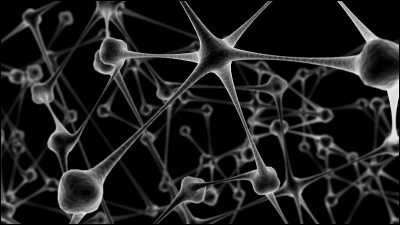The contents of the offline lecture given by the editor-in-chief of GIGAZINE entitled 'Does superintelligence dream of creation?' are fully released

On Sunday, May 11, 2025, as part of the comprehensive anime and game event '
The venue for the lecture was the movie theater ' ufotable CINEMA ' in Tokushima City, Tokushima Prefecture. As the name suggests, ufotable CINEMA is a movie theater produced by the anime production studio ufotable, and is located less than 10 minutes' walk southwest from Tokushima Station.
Take an express bus to Tokushima Station.

I walked to Higashishinmachi Shopping Street, where ufotable CINEMA is located. There were Machi★Asobi flags and banners hanging all over the place.
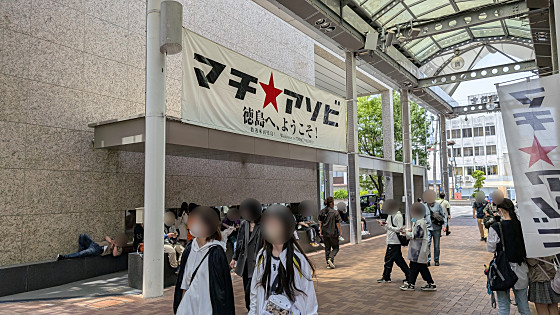
The appearance of ufotable CINEMA looks like this.

ufotable CINEMA has two theaters, and the venue for this lecture is Theater 2, which has 29 seats.

Prepare slides for presentation in the projection room.

It appeared on the screen. It was huge.

After that, more and more people came in and the venue was almost full. Thank you! Thank you!
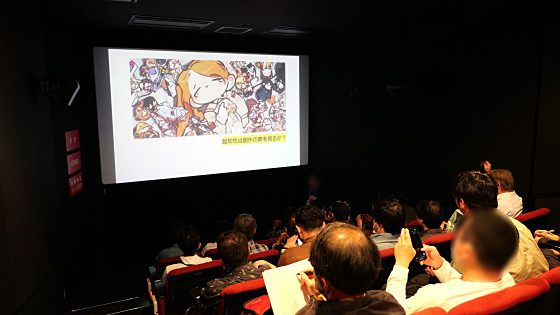
So, from here on, I will post all 85 pages of slides used in the lecture that day. The title of the lecture was 'Does a Superintelligence Dream of Creation?'

To the question of 'to see' or 'not to see,' the editor-in-chief came to the answer: 'to see.'

First of all, how is the Editor-in-Chief of GIGAZINE involved in 'creation'?

The editor-in-chief graduated from Senri High School in Osaka, where he was a member of the journalism club (now the creative writing club) and created a variety of things during his high school years.

He continues to be active in the creative field, writing articles for GIGAZINE and publishing doujinshi that collect original works by junior and senior high school students, such as illustrations, literature, manga, and critiques, as the president of

By the way, we will also be participating in

In addition, we are also active in Ibaraki City, Osaka Prefecture, where the GIGAZINE editorial department is based, and we plan to hold a 'Drawing Chat Experience (tentative)' at the '

Furthermore, I am also registered as a club instructor in Ibaraki City and Osaka Prefecture. I can instruct the art club and literature club. I am waiting for your request.

Returning to the main topic, this lecture, 'Do Superintelligences Dream of Creation?', is based on a talk I gave to elementary, junior high, and high school students.

What is superintelligence?

We have previously mentioned superintelligence in articles by GIGAZINE.

In May 2023, an article was published stating that '

In 2023,
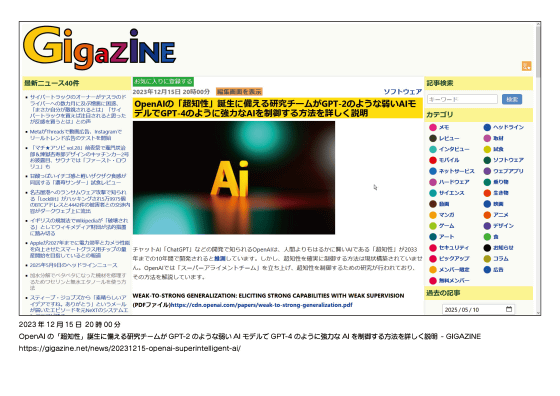
This 'Super Alignment Team' was

Then, in September 2024, OpenAI CEO Sam Altman said, '

'Thousands of days' is a maximum of '9,999 days,' so roughly speaking, superintelligence will be born somewhere between September 2024 and about 27 years from now.

Superintelligence will emerge by 2051...

Within 26 years and a few months, a superintelligence far superior to our own humanity will be born!

Superintelligence is called 'Artificial Superintelligence' in English.
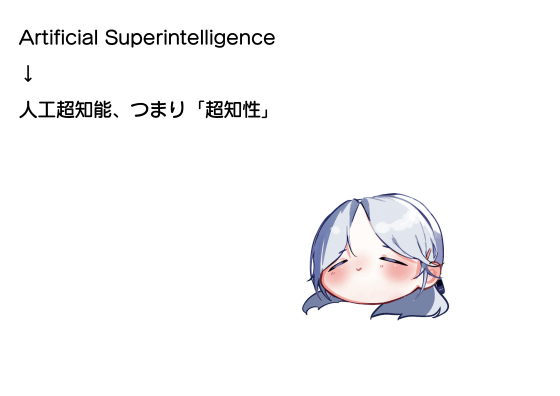
High-performance AI such as ChatGPT and Grok are appearing one after another, but these AIs are clearly inferior to humans in some ways and make a lot of mistakes, so they cannot be said to be clearly 'beyond human.' Superintelligence is a true 'AI' with intelligence that transcends humans, like those seen in science fiction movies.

So, what exactly is 'AI'?

In fact, it was defined in Japan in 1982, over 40 years ago.

'Fools learn from experience, wise men learn from history.' So, as wise men, we should learn from history.

Here is a brief summary of the history leading up to its release in Japan in 1982.

First, mathematician
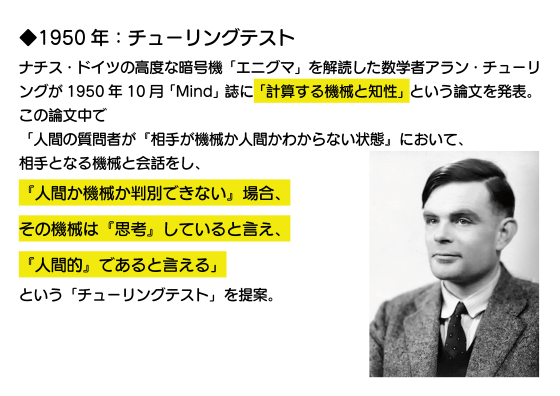
The world's first high-level language,

The term 'Artificial Intelligence' was coined in 1956.
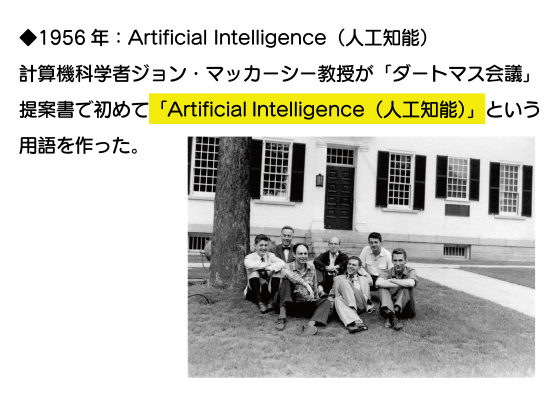
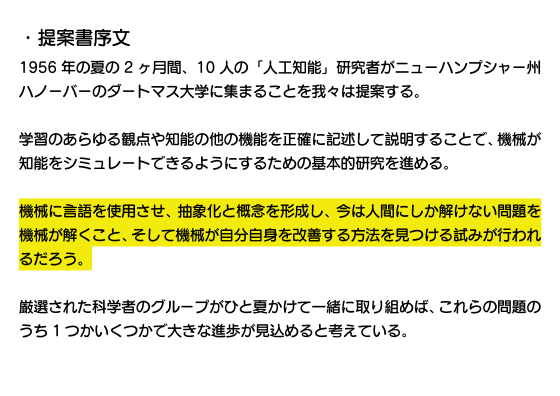
In 1967, a chess program called '
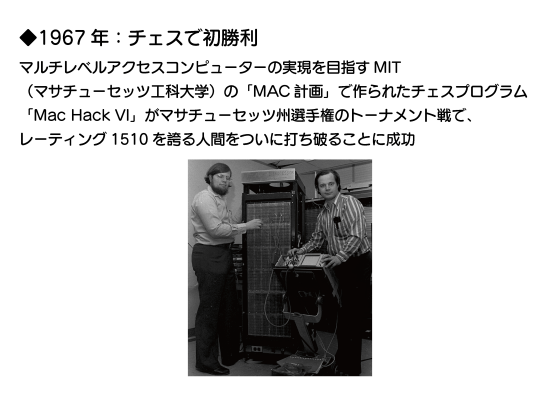
In 1997, the
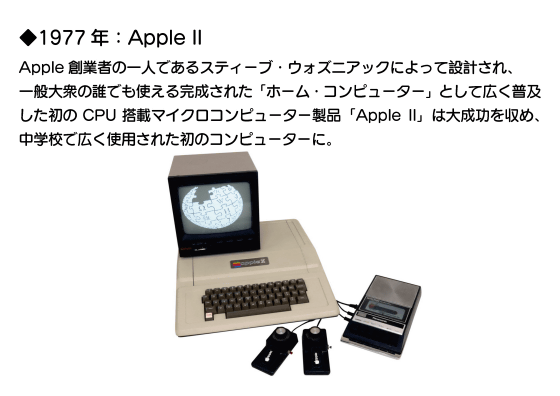
Then, in 1982, Japan's Ministry of International Trade and Industry established the Institute for New Generation Computer Technology (ICOT) and launched the '
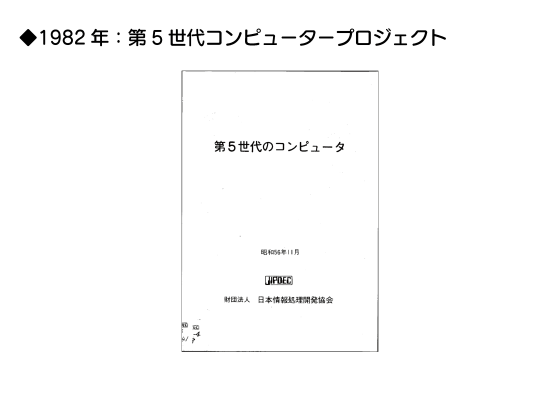
The Fifth Generation Computer Project was a project aimed at developing ' artificial intelligence that exceeds the human brain .' In other words, Japan had already launched a project to develop superintelligence in 1982.

The Fifth Generation Computer Project classified the 'elements' used in computers into 1st to 5th generations, and aimed to develop a 5th generation computer capable of running 'artificial intelligence that exceeds the human brain.' The first generation circuit element was the 'vacuum tube.'
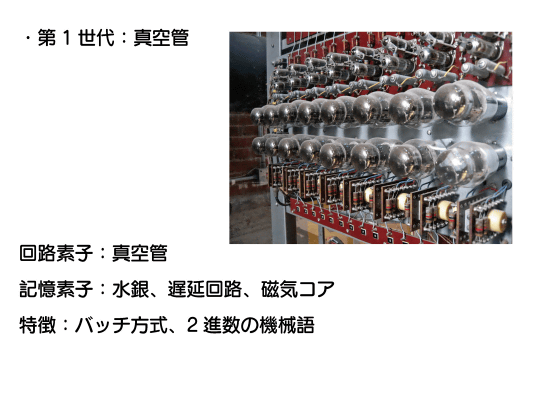
The second generation circuit element is the 'transistor.'

The third generation is 'integrated circuits (ICs).' This is where processing such as 'online processing' and 'parallel processing' is expected to come into play.
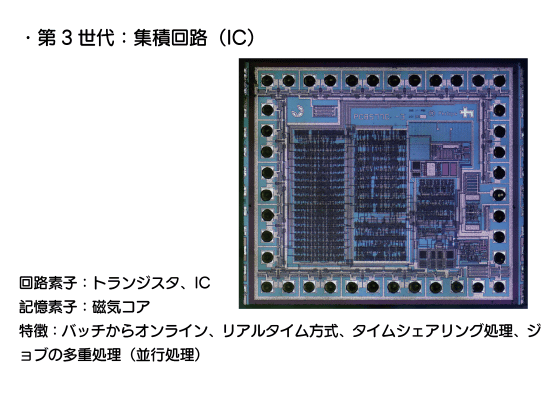
The 3.5th generation is 'large scale integrated circuit (LSI).'
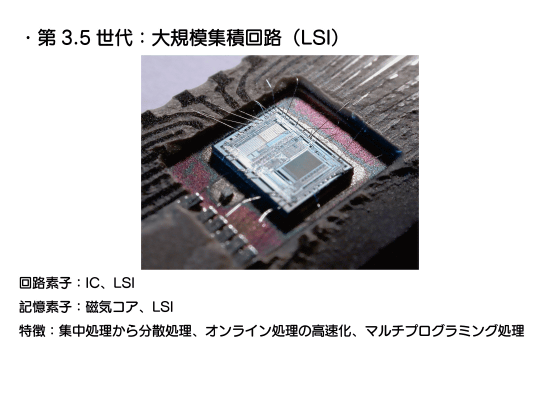
The fourth generation is an even denser version of LSI called 'ultra-LSI,' which is expected to be used for 'networks' that allow for large-volume data processing between multiple systems, and 'databases' that allow for centralized management of large volumes of data.

And now the problematic fifth generation. The circuit elements are 'unknown'. The memory elements are also 'unknown'. The processing targets are non-numeric data such as 'natural language', 'characters', 'figures' and 'images', and it is said to be capable of ultra-high speed calculation processing and ultra-high speed memory retrieval.
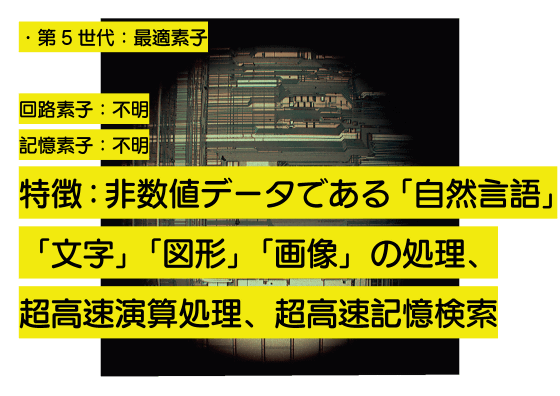
The ability to process 'natural language,' 'text,' 'shapes,' and 'images' perfectly matches the modern multimodal AI model.
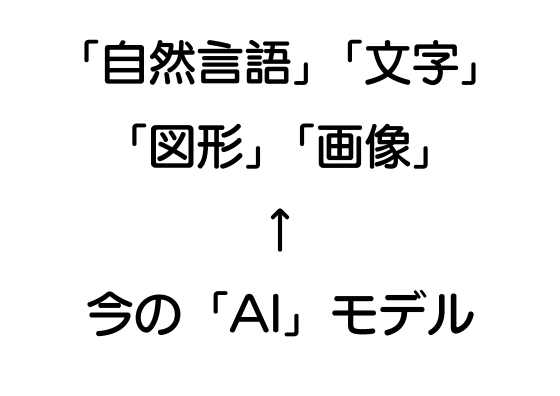
In other words, we are living in the 'real future' that was once imagined.

There's more to the blueprint for this far-sighted project.

There are four main functions required for the Fifth Generation Computer Project.

The first is to 'increase the level of intelligence and increase affinity with humans as a good understander,' and the use of natural language is required to achieve this function.

The second is 'the ability to replace humans and provide support when exploring areas that are unknown to humans. A decision-making support system. An intelligent robot.'

The third is 'the ability to easily and instantly obtain information in various forms when needed - a multi-form database, a highly distributed database.'

The fourth is 'gaining new knowledge by simulating unknown situations, such as experimental systems and alloy synthesis.'
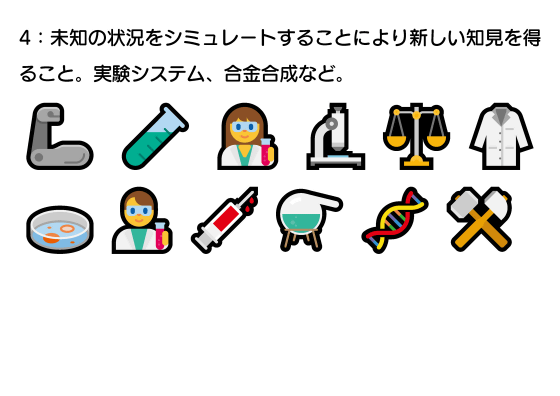
The Fifth Generation Computer Project envisioned eight futuristic features:

The first is that it has eyes, ears, and a mouth like a human, and can directly input voice, shapes, and text. This is achieved by using a camera, microphone, and speaker.
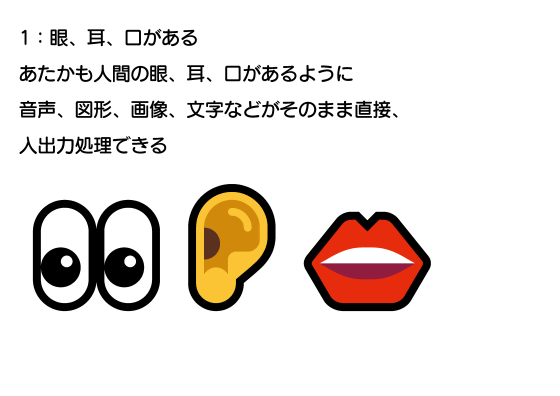
The second was that 'even people who don't know programming languages will be able to use advanced functions while responding in everyday language.' This was also largely successful, although it is not perfect. In addition, 'automatic translation and interpretation' was also envisioned, utilizing the function that handles everyday language.
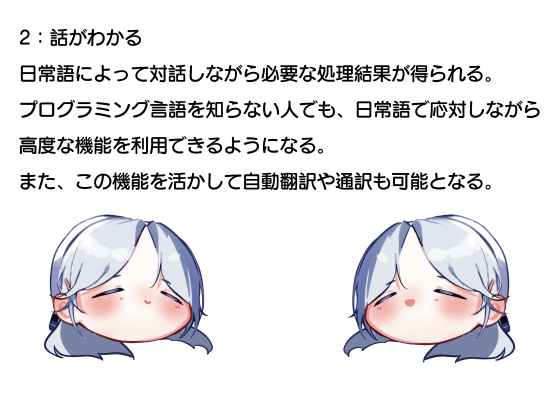
The third is 'using stored information to infer and solve unknown problems.' This technology of 'using learned content to infer unknown problems' has been rapidly developed by AI developers in recent years.
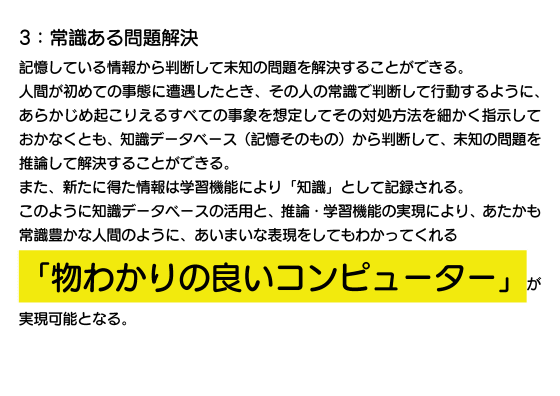
The fourth is to 'build a higher-level system by combining computers optimized for diverse uses.'

The fifth function is 'automatic synthesis of programs based on simple instructions.' This function is also being realized by AI.
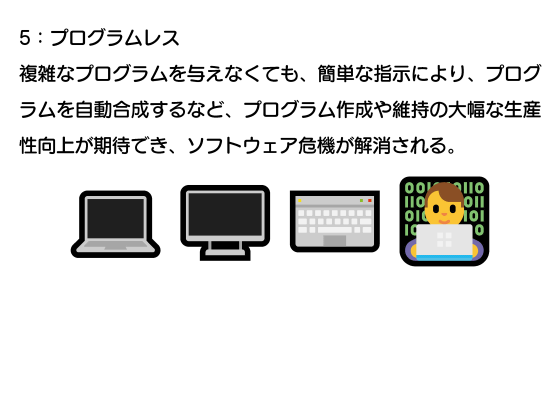
The sixth is to create a multi-form database that can organize and record information other than numerical information, such as voice, figures, images, and photographs, and can be accessed at any time.
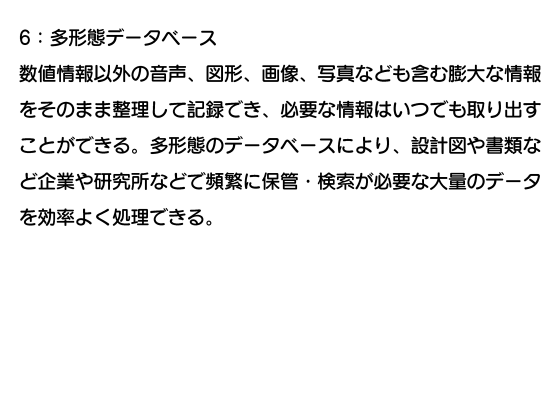
The seventh is a 'computer capable of ultra-high-speed processing.' In the current computer industry, a major issue is how to process large amounts of data in parallel. At the time of the Fifth Generation Computer Project, it was suggested that ' technology capable of ultra-high-speed parallel processing is necessary .'

And the eighth is 'High reliability and excellent maintainability. It has a mechanism for automatically detecting and repairing failures.' 'Automatic detection and repair of failures' is a function that is now required for AI.
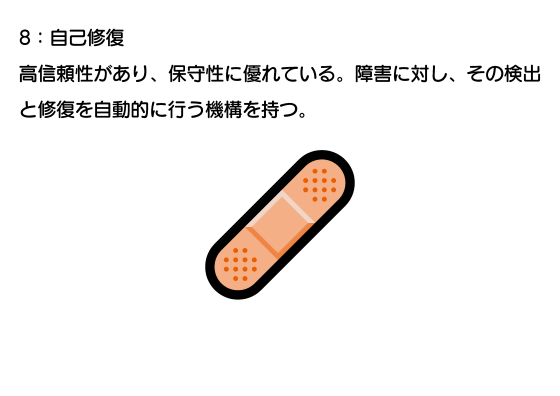
The plan goes on to conclude that 'It is said that the fifth generation computer will emerge in the early 1990s. In order to realize a prototype by 1990, research and development must begin immediately.' However, despite a total of 54 billion yen of the national budget being invested in the fifth generation computer project, it ended in 1992 without realizing superintelligence.

Although the Fifth Generation Computer Project was stalled, computer technology around the world continued to advance steadily.

Windows 95 was released in 1995.

Processors have also become smaller in size in line with Moore's Law, which states that the number of transistors per semiconductor area doubles every two years.
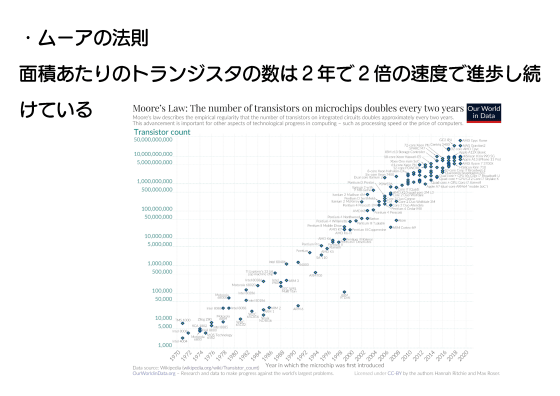
Recently, the 'Fan's Law' has been proposed, which states that the amount of computational power that can be done per unit of electricity triples every two years. Fan is the CEO of NVIDIA, Jensen Huang.
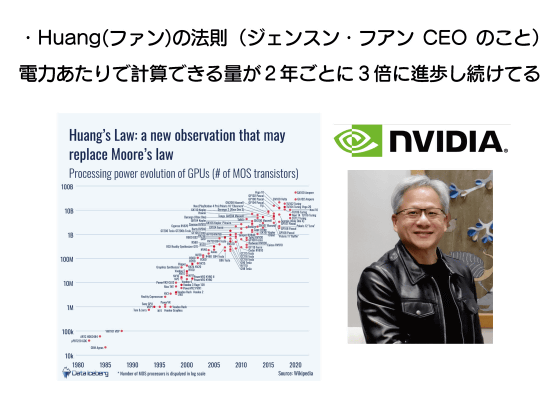
The blog boom began around 2004, and a huge amount of data began appearing on the Internet.
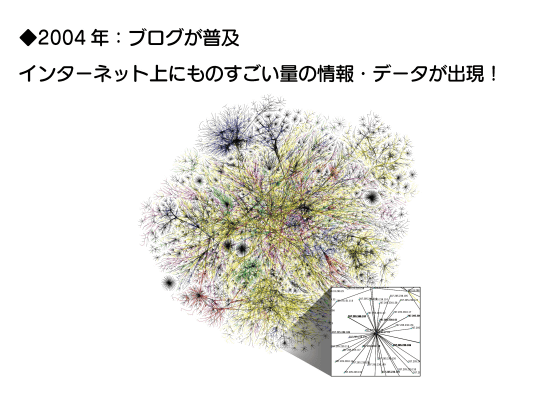
In 2006, the machine learning model 'deep learning' was invented, which uses a computational method called 'neural network' that mimics the brain. Deep learning suddenly began to attract attention in 2012 with the emergence of the highly accurate image recognition technology '
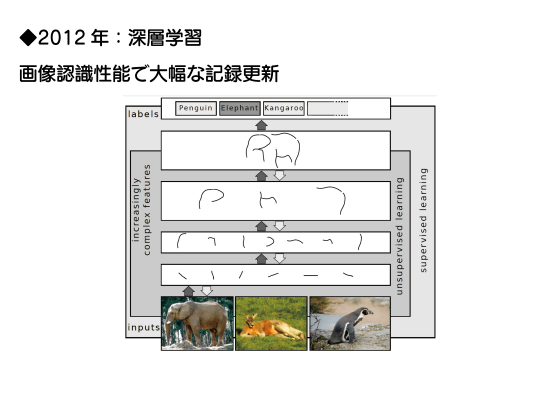
Since then, neural networks have become increasingly large in scale.
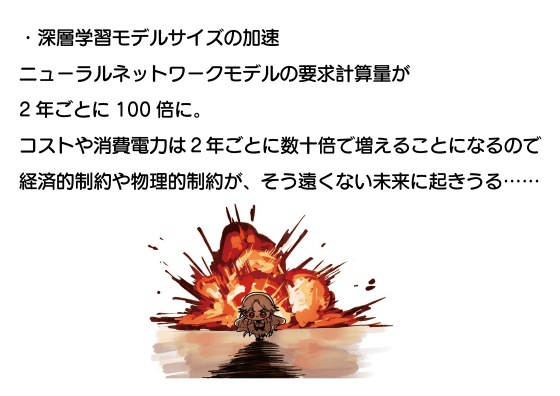
In 2020, OpenAI
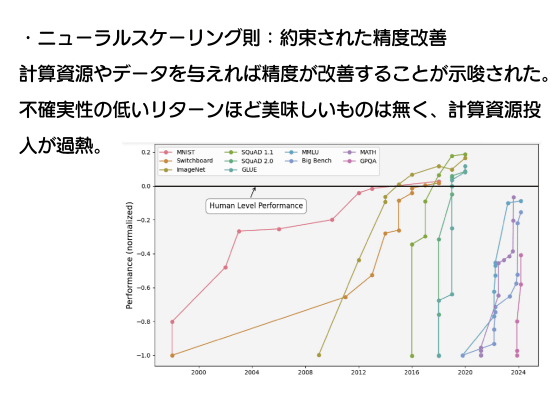
Early language models had a simple function of 'predicting the next word,' but as the amount of data to be trained increased, at some point models such as GPT-3 were created that had a kind of intelligence that could not be explained by the function of 'predicting the next word.' This 'effect of a large number of elements gathering together to produce a phenomenon that cannot be realized by itself' is called ' emergence .'
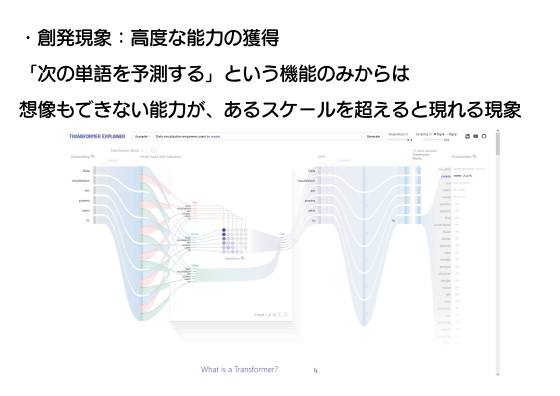
It can also be said that models like GPT-3 have acquired 'common sense, the ability to imagine things that were unknown at the time of learning.'

Then, in 2022,
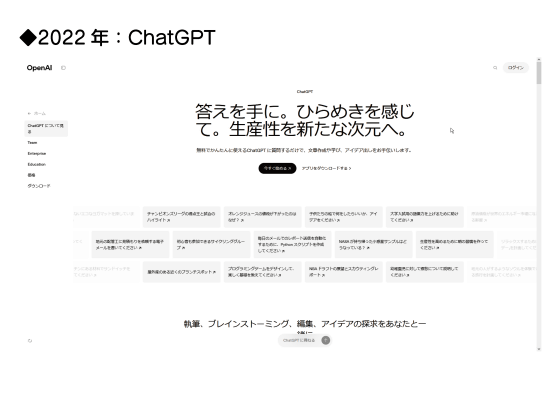
Since then, the model size of AI models has continued to increase, and their performance has improved accordingly. In December 2023, Google released Gemini, which has outscored human experts in multiple tests.
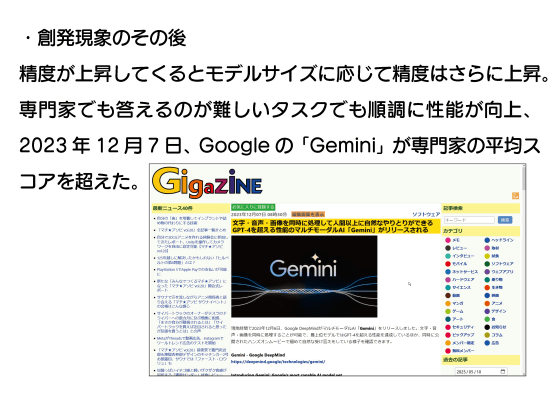
AI is now being used in the world of autonomous driving. Until now, autonomous driving technology has been algorithm-based, but in 2019,
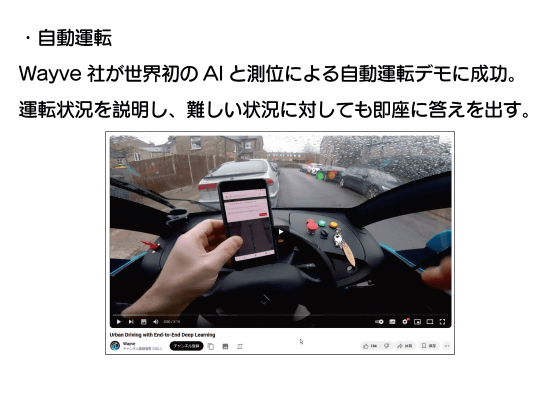
In addition, robots are now being equipped with AI models. In March 2023, Google announced the '

Now, let's talk about the future. AI models have improved their performance by increasing the amount of training data, but it is predicted that training data

By the way, if we were to show data capacity in an easy-to-understand way for humans, it would look like this. The total amount of words a human speaks in their lifetime is said to be 2GB. The library of the e-book platform 'Kindle' has accumulated 2TB of data, and Google's full-text book database '

It is said that the 'singularity' will occur in 2045, when AI will surpass human intelligence.
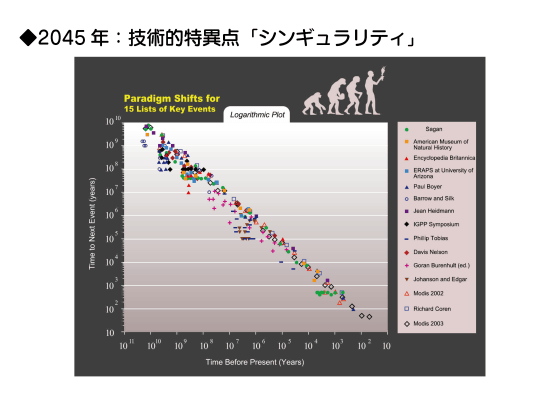
As mentioned at the beginning, CEO Altman predicts that 'superintelligence may become a reality within a few thousand days.'

It is said that superintelligence will emerge within the next 26 years and a few months, but current AI is quite clumsy, returning completely wrong answers to questions, or outputting images that are completely different from the instructions when asked to generate images, and it seems to be a long way from superintelligence.

The reason why AI is a bit of a dud is because it cannot learn from 'real' events in a realistic way like humans can.

There are two possible ways to overcome data scarcity, teach 'reality' to disembodied AI, and turn it into super-intelligence.
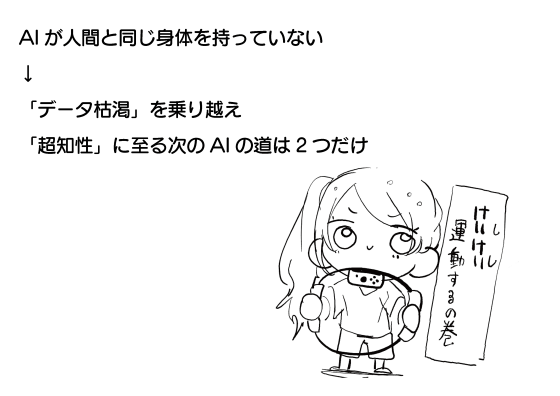
The first is to create a 'Second Earth' in cyberspace with the exact same physical conditions and environment as Earth, and then release AI on the Second Earth to learn. In theory, any number of Second Earths can be created, and unlike the real world, time can be fast-forwarded, so it can learn hundreds of billions of times the time of a human's life in a short period of time. Several research institutes and companies are working on research and development to realize this idea, and a research team at Carnegie Mellon University has already released
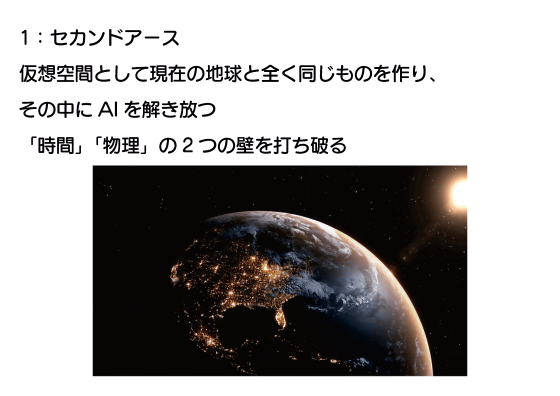
Additionally, we will need robots that embody AI so that the skills we learn on Second Earth can be applied in the real world.

Current AI systems wait for human input and respond to it. However, superintelligence requires the autonomy to think without human input. In other words, the next step is to develop AI that can act without being questioned by humans.
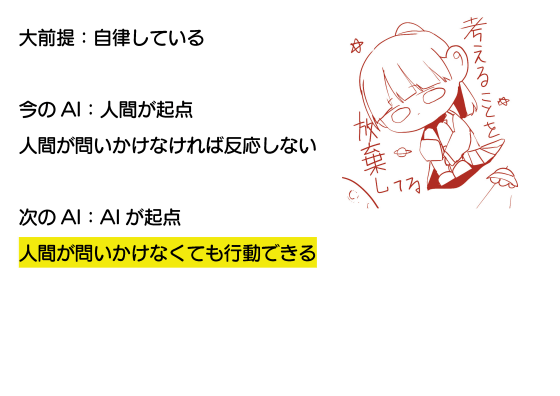
After learning on Second Earth and developing a robotic body, the AI will reach super-intelligence and begin to create autonomously.

With the advent of chat AI, AI has suddenly become familiar to us. As adults, we are still ingrained with workflows and ways of thinking that existed before AI became widespread, so it is difficult for us to get used to a world dominated by AI. However, children, who will be the main players of the next generation, are quite adaptable to AI, and even within the editor-in-chief's observations, there have been cases where 'a child who wanted to learn how to draw inputted his own illustrations into a drawing AI, outputted his ideal model, and repeatedly copied it, which led to a rapid improvement in the skills required to correct the AI-output picture.' Nevertheless, since interactions with AI involve risks, it is also important to create a place to teach children how to use and interact with AI.

However, if the content is not interesting for children, such as in an 'IT literacy class,' it is difficult for them to become interested.

GIGAZINE believes that a 'creative club' where participants can come into contact with AI through creative activities such as drawing illustrations and writing novels would also be suitable for improving AI literacy.

So that's the end of the lecture.

After this, there was a Q&A session at the venue, and a question popped up saying, 'For now, AI is being used in creative fields such as illustration and coding, but is it possible to do simple labor instead of humans yet?' GIGAZINE will also be holding an offline lecture at the upcoming Machi★Asobi, so please come along. It's fun.
Related Posts:




